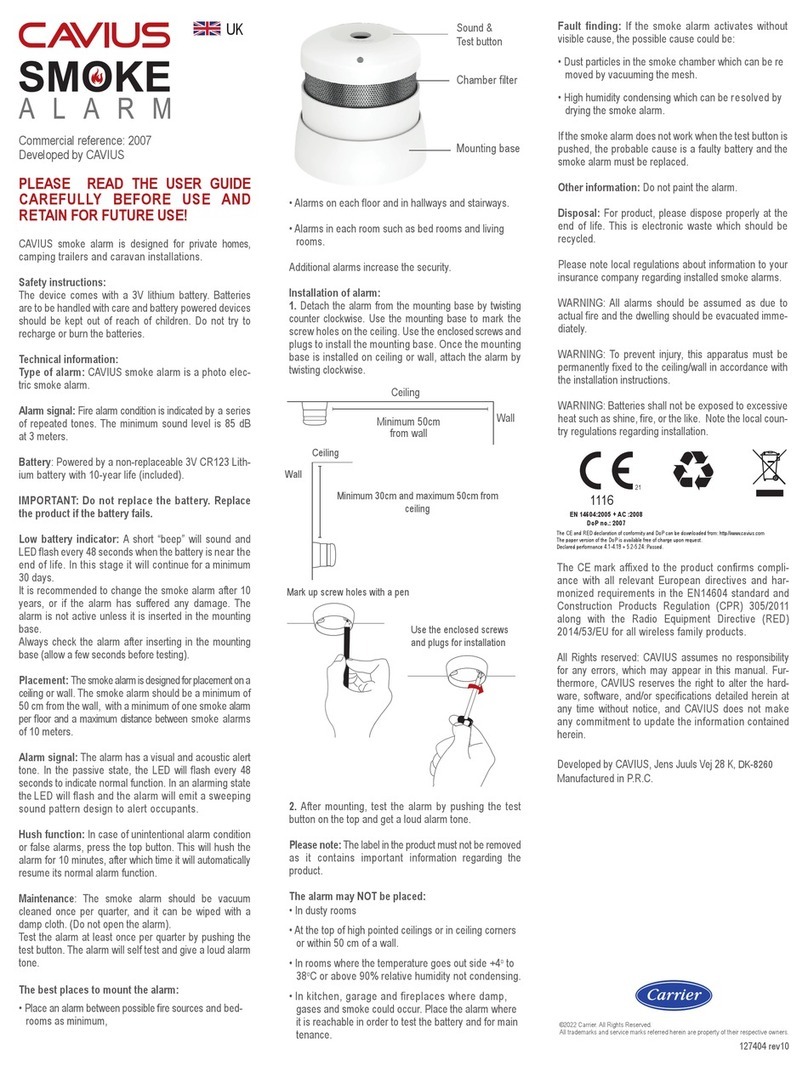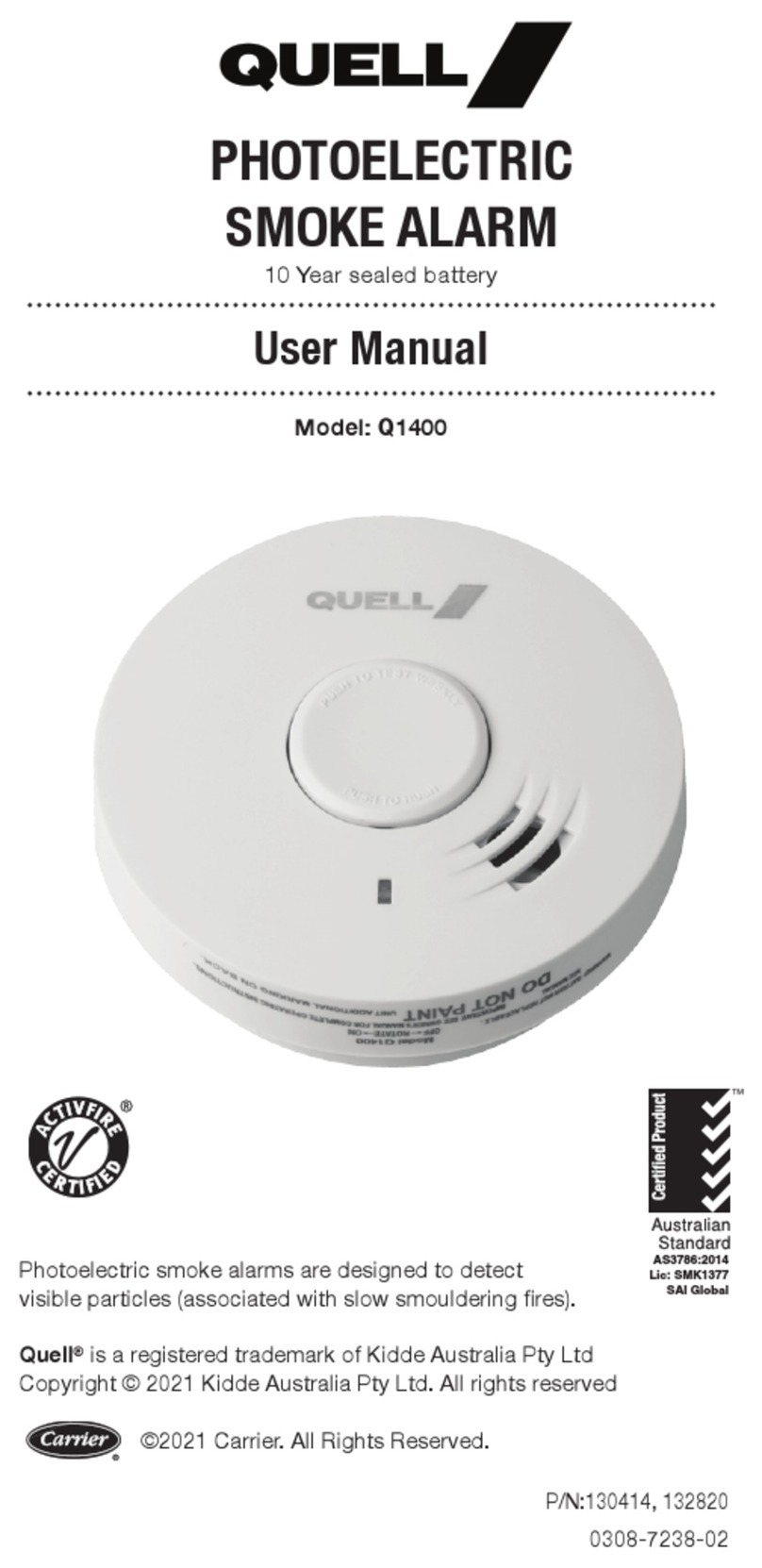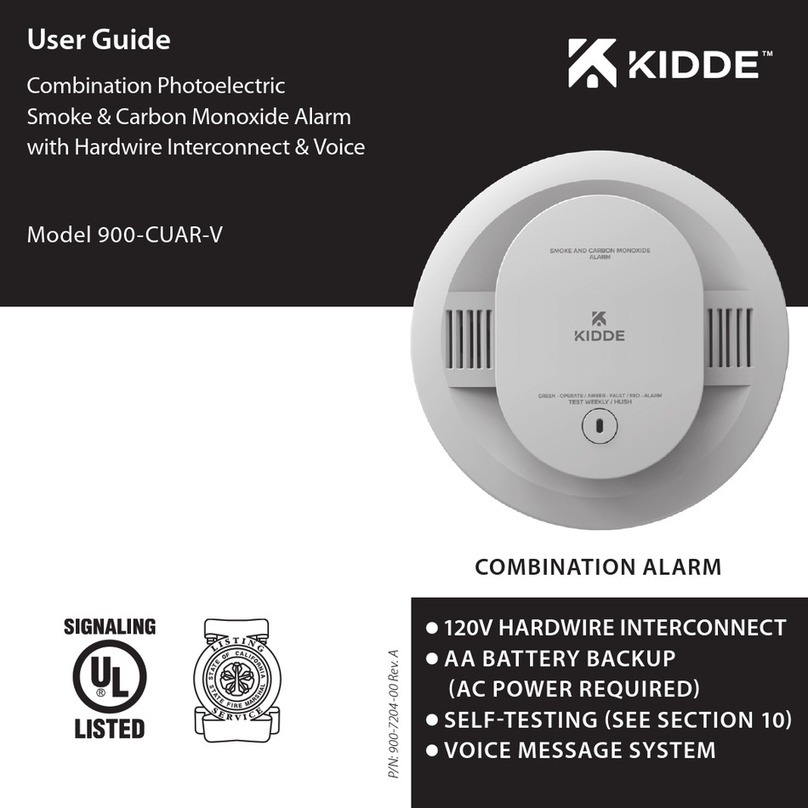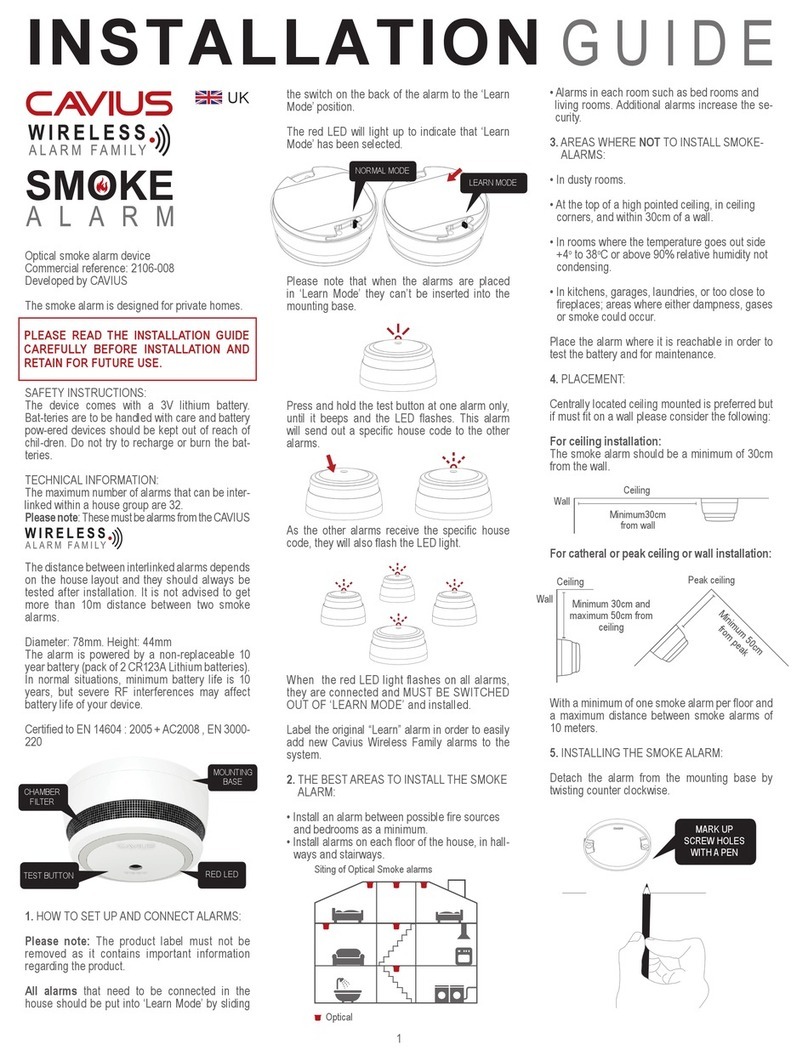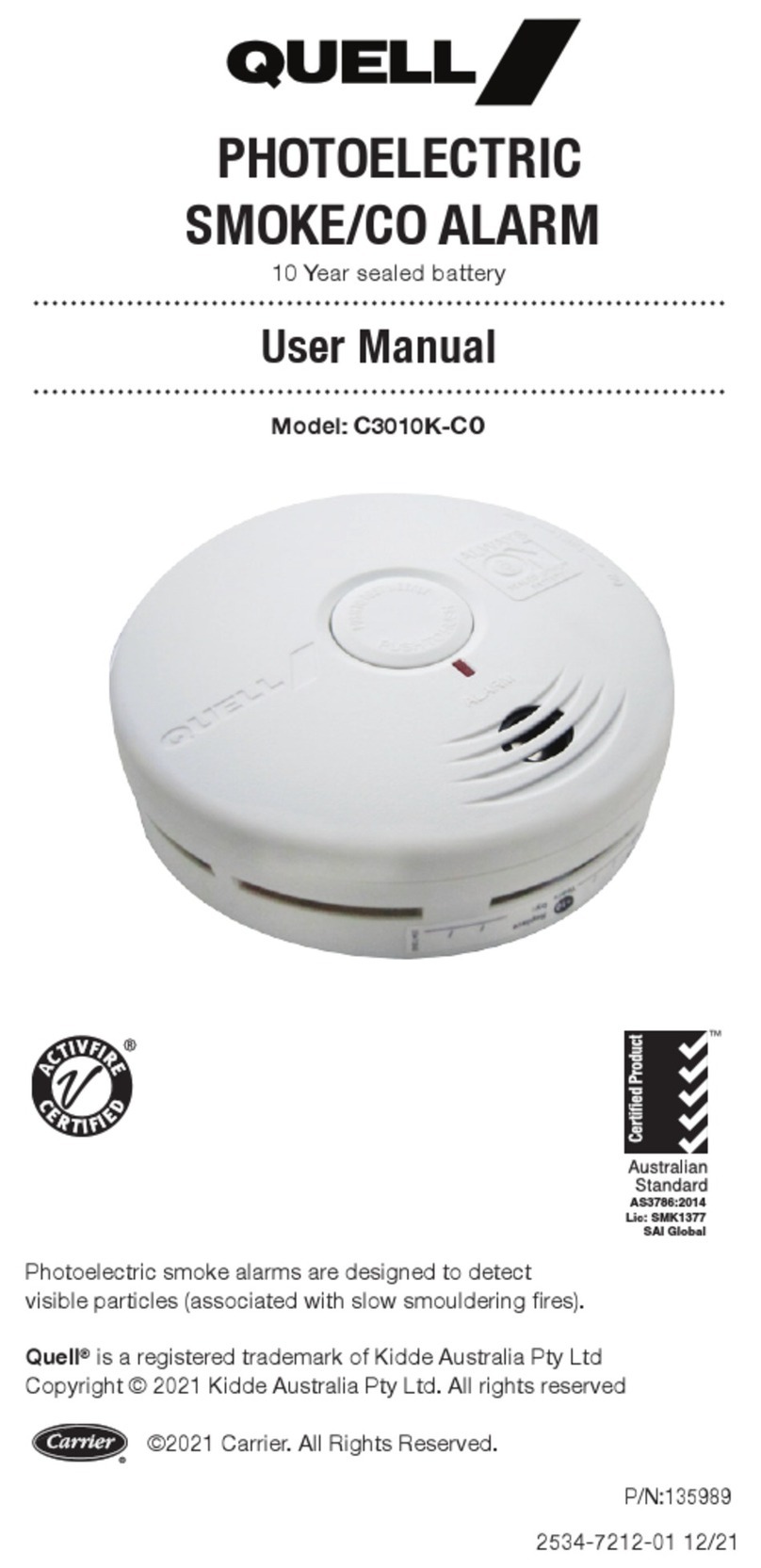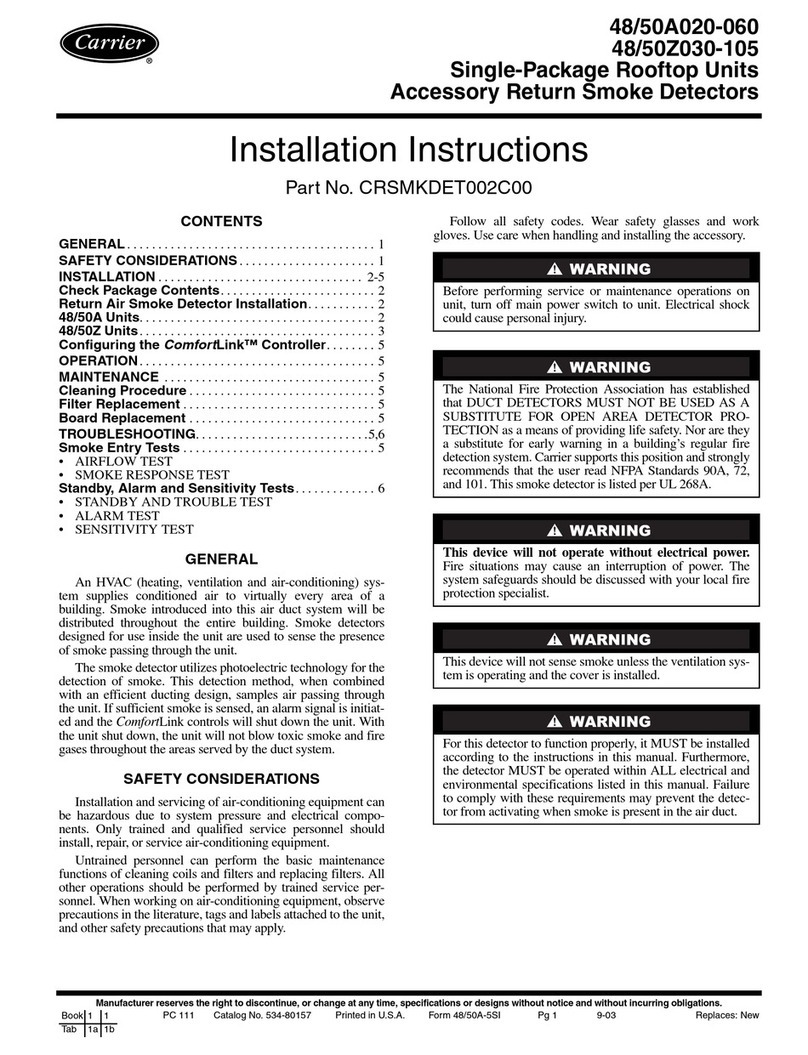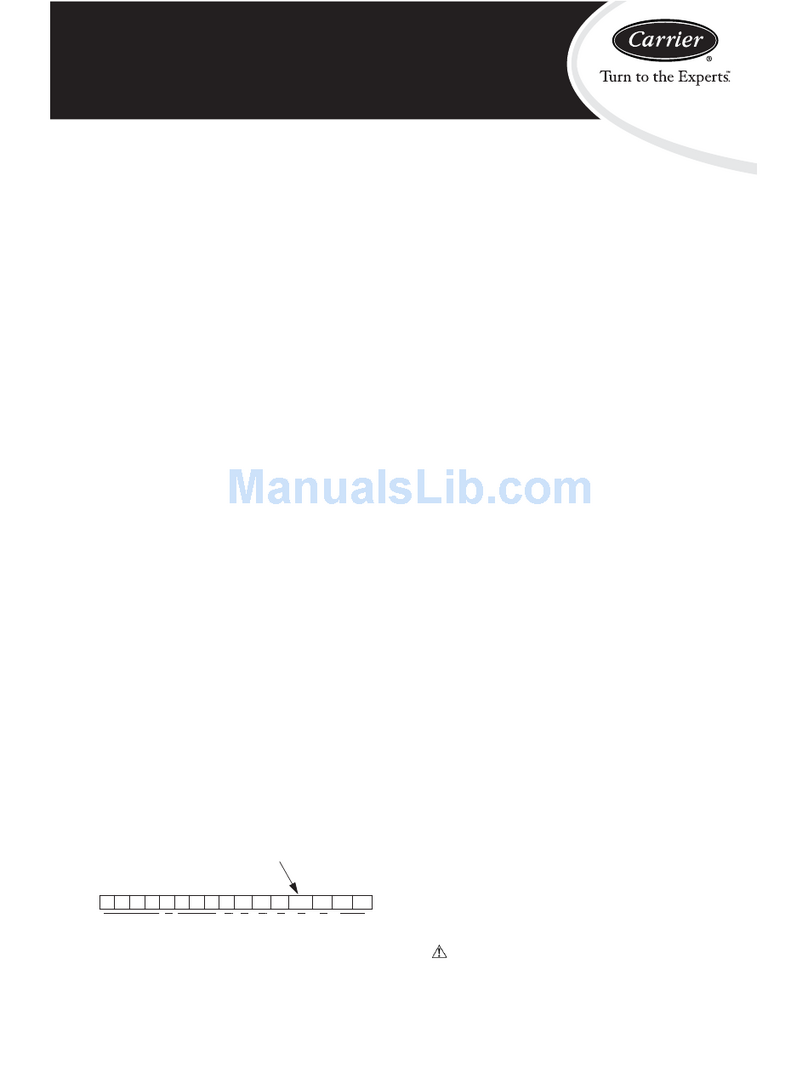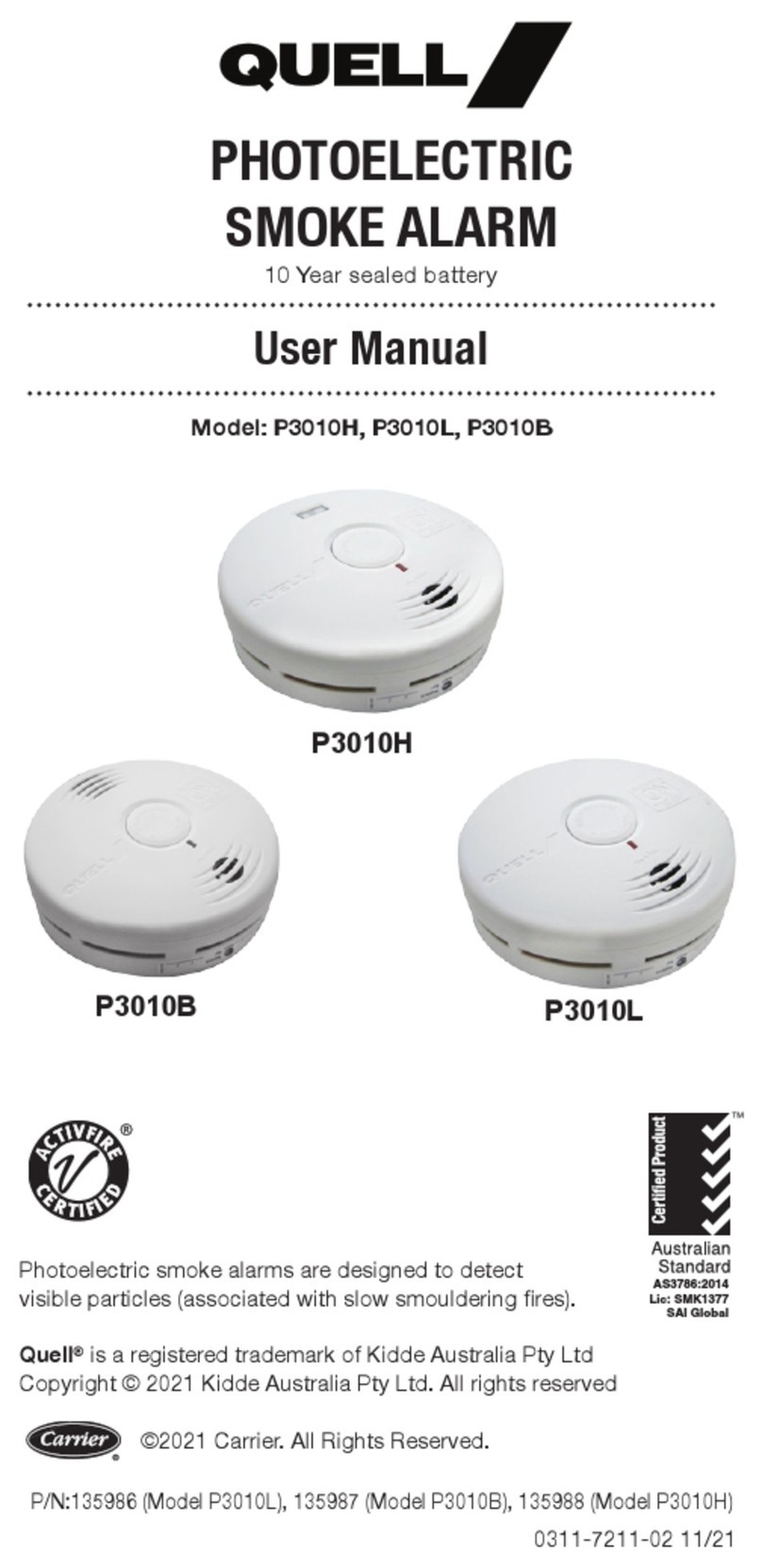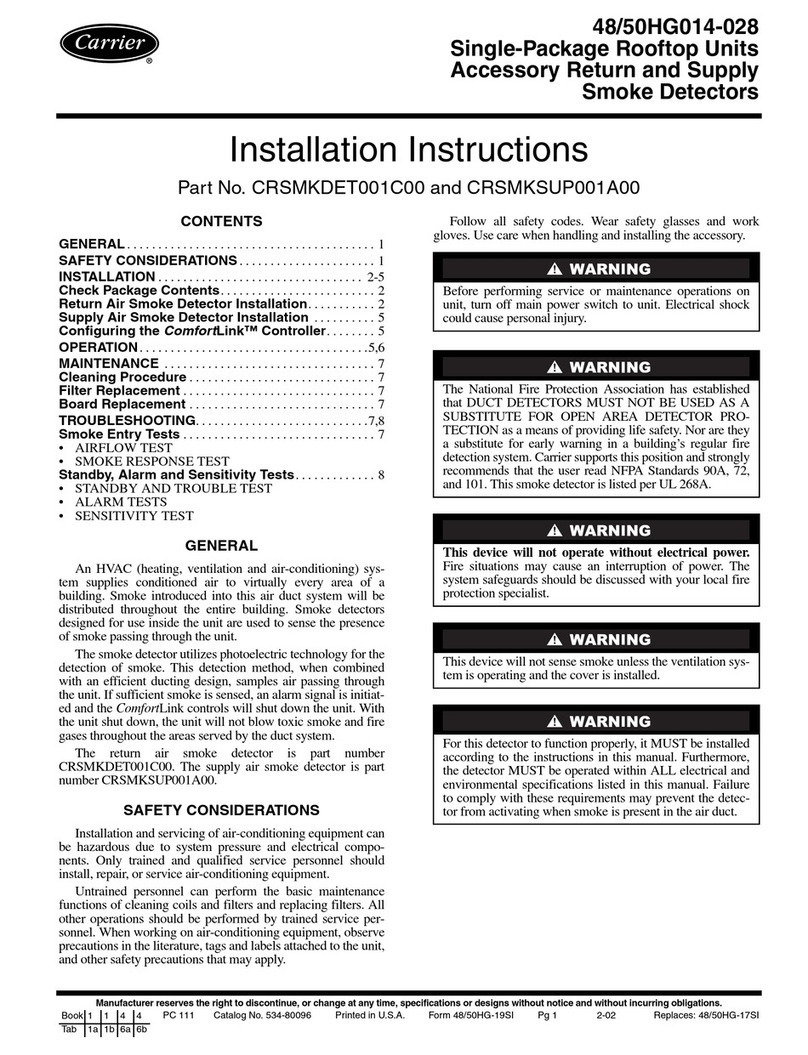
3. Recommended Locations for Alarms
Mobile Home Installation:
For Well Insulated Mobile Homes
Install alarms as recommended on the previous pages.
In mobile homes that are not well insulated extreme heat or cold can
be transfered through poorly insulated walls and roofs. This may create
a thermal barrier which can prevent the smoke from reaching an alarm
mounted on the ceiling.
For Poorly Insulated Mobile Homes
Install the alarm on an inside wall with the top edge of the alarm at a
minimum of 100mm and a maximum of 300mm below the ceiling
(Figure 2A).
For minimum protection, install at least one alarm close to the bedrooms.
For additional protection, see Figure 1A.
Warning: test your alarm operation after caravan or mobile
home vehicle has been in storage, before each trip and at least
once a week during use.
4. Locations To Avoid
6 7
!
• Smoke alarms should not be installed within 0.9m(3 ft)
• of the door to a bathroom containing a tub or shower
• forced air supply ducts used for heating or cooling
• ceiling or whole house ventilating fans
• other high air ow areas
• Areas where curtains or other objects will block the sensor. Smoke
must be able to reach the sensor to accurately detect conditions.
• Install at least 300mm away from a light tting.
• No closer than 400 mm outside the circumference of a ceiling fan.
• Keep out of insect infested areas.
• Avoid excessively dusty, dirty or greasy areas.
• Do not install in areas where the temperature is colder than 0°C or
hotter than 40°C.
• Do not install in areas where the relative humidity (RH) is greater
than 93%.
• Normal cooking may cause nuisance alarms. If a kitchen alarm is
desired, it should have an alarm silence feature and should not be
installed within 3m of cooking appliances.
• Avoid dead air spaces such as the peak of an “A” frame ceiling.
“Dead Air” at the top may prevent smoke from reaching the alarm in
time to provide early warning. Refer to Figure 2A and 2B.
